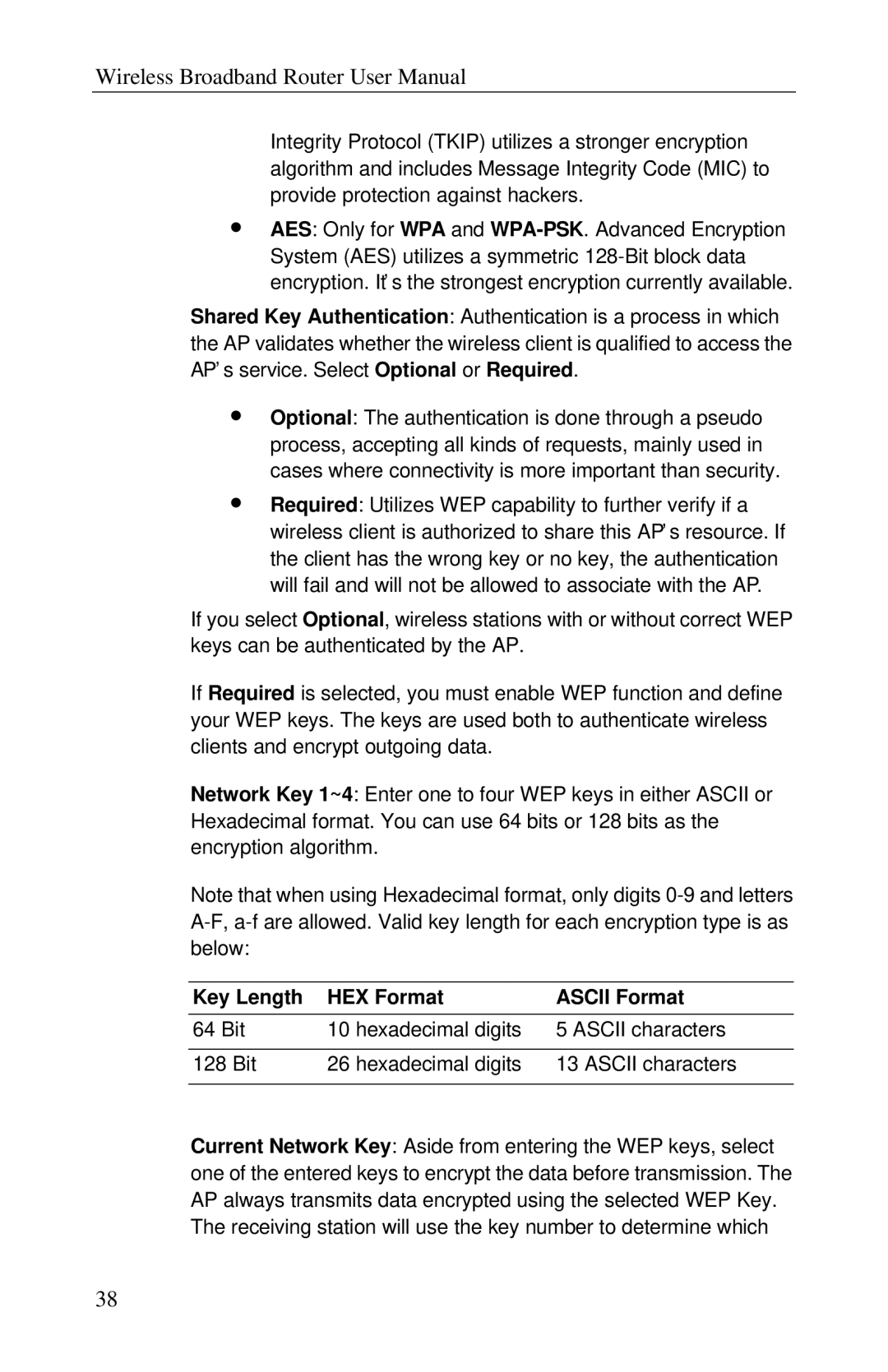
Wireless Broadband Router User Manual
Integrity Protocol (TKIP) utilizes a stronger encryption algorithm and includes Message Integrity Code (MIC) to provide protection against hackers.
∙AES: Only for WPA and
Shared Key Authentication: Authentication is a process in which the AP validates whether the wireless client is qualified to access the AP’ s service. Select Optional or Required.
∙Optional: The authentication is done through a pseudo process, accepting all kinds of requests, mainly used in cases where connectivity is more important than security.
∙Required: Utilizes WEP capability to further verify if a wireless client is authorized to share this AP’ s resource. If the client has the wrong key or no key, the authentication will fail and will not be allowed to associate with the AP.
If you select Optional, wireless stations with or without correct WEP keys can be authenticated by the AP.
If Required is selected, you must enable WEP function and define your WEP keys. The keys are used both to authenticate wireless clients and encrypt outgoing data.
Network Key 1~4: Enter one to four WEP keys in either ASCII or Hexadecimal format. You can use 64 bits or 128 bits as the encryption algorithm.
Note that when using Hexadecimal format, only digits
Key Length | HEX Format | ASCII Format |
64 Bit | 10 hexadecimal digits | 5 ASCII characters |
|
|
|
128 Bit | 26 hexadecimal digits | 13 ASCII characters |
|
|
|
Current Network Key: Aside from entering the WEP keys, select one of the entered keys to encrypt the data before transmission. The AP always transmits data encrypted using the selected WEP Key. The receiving station will use the key number to determine which
38
